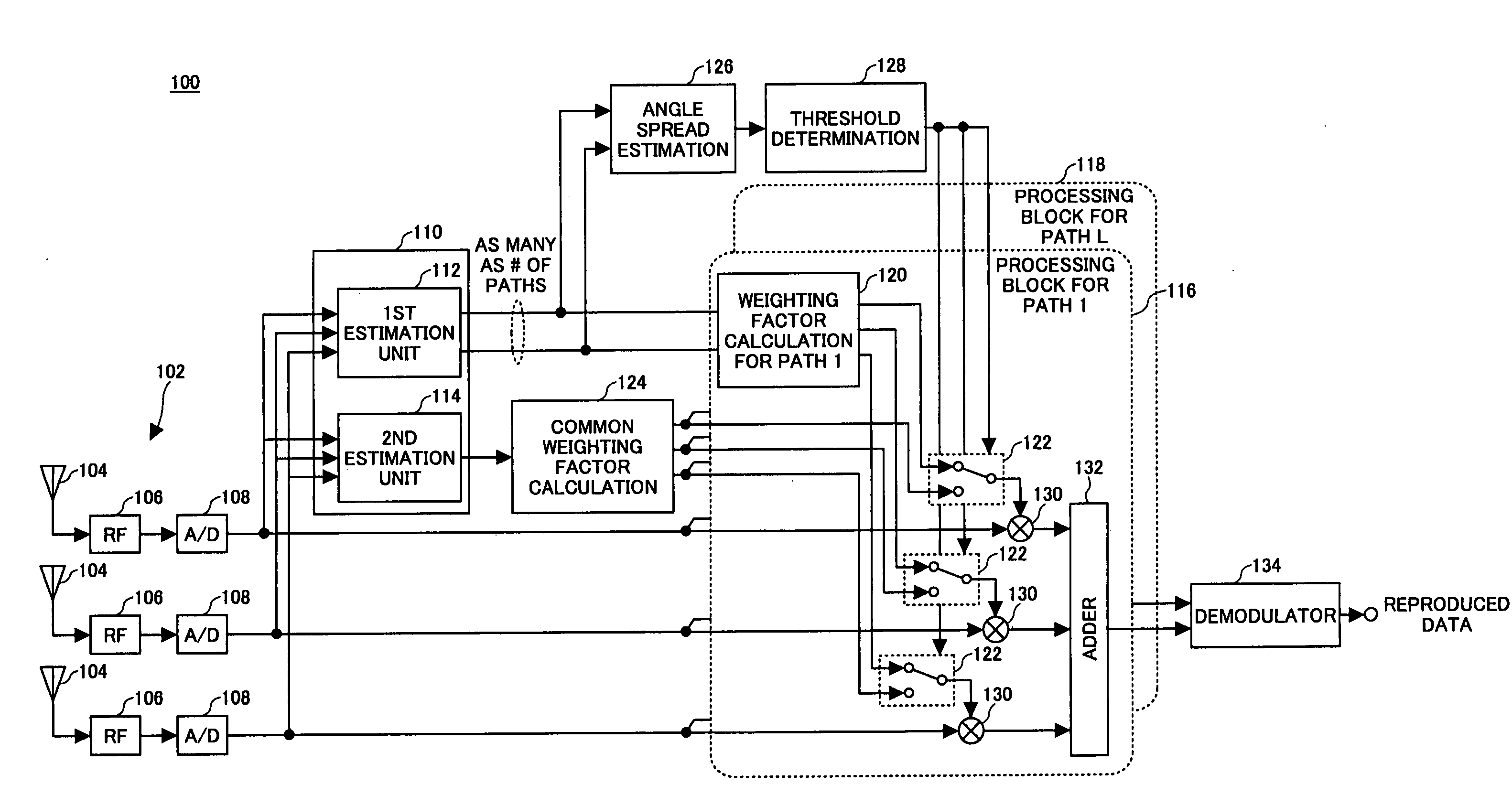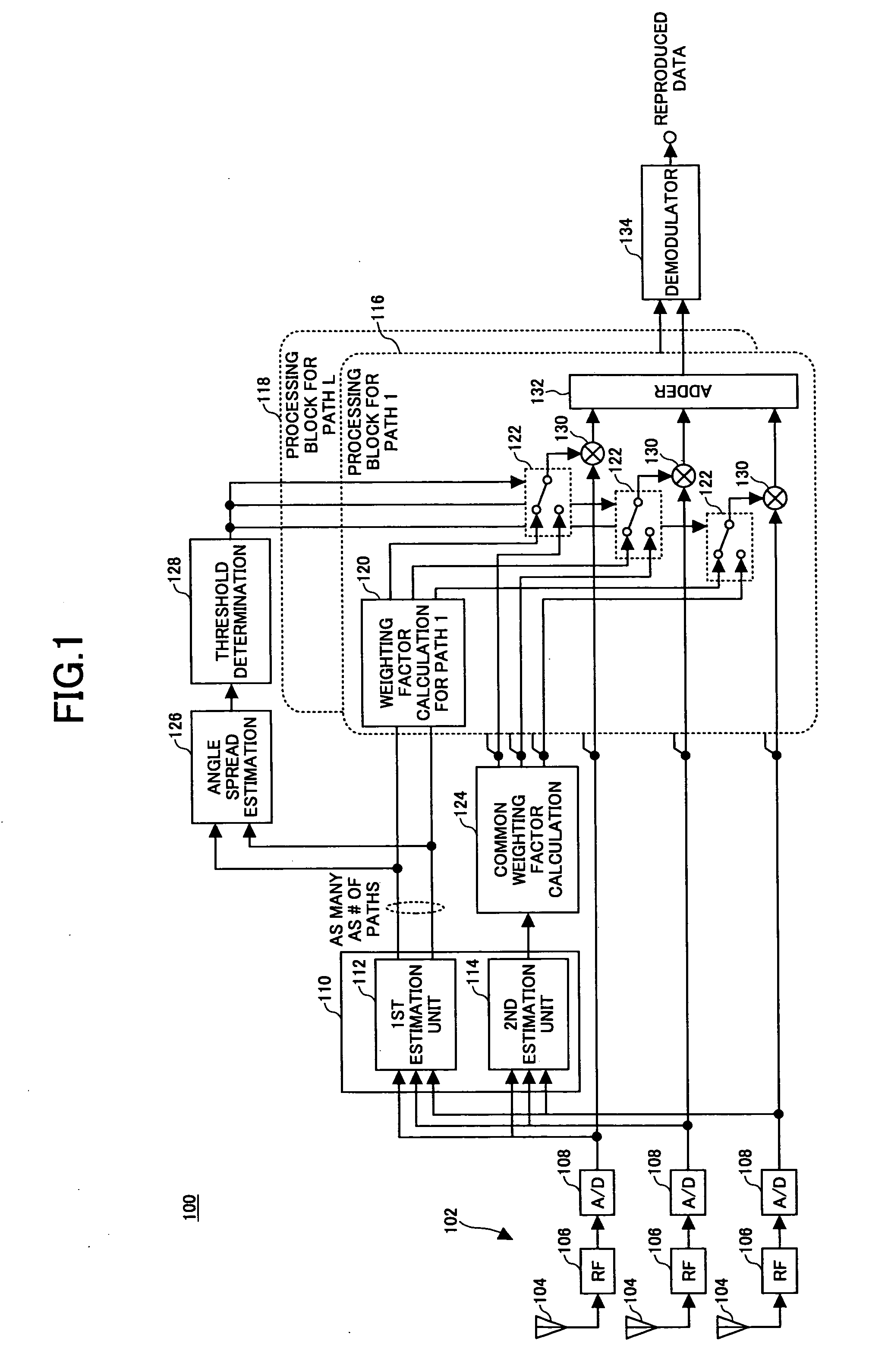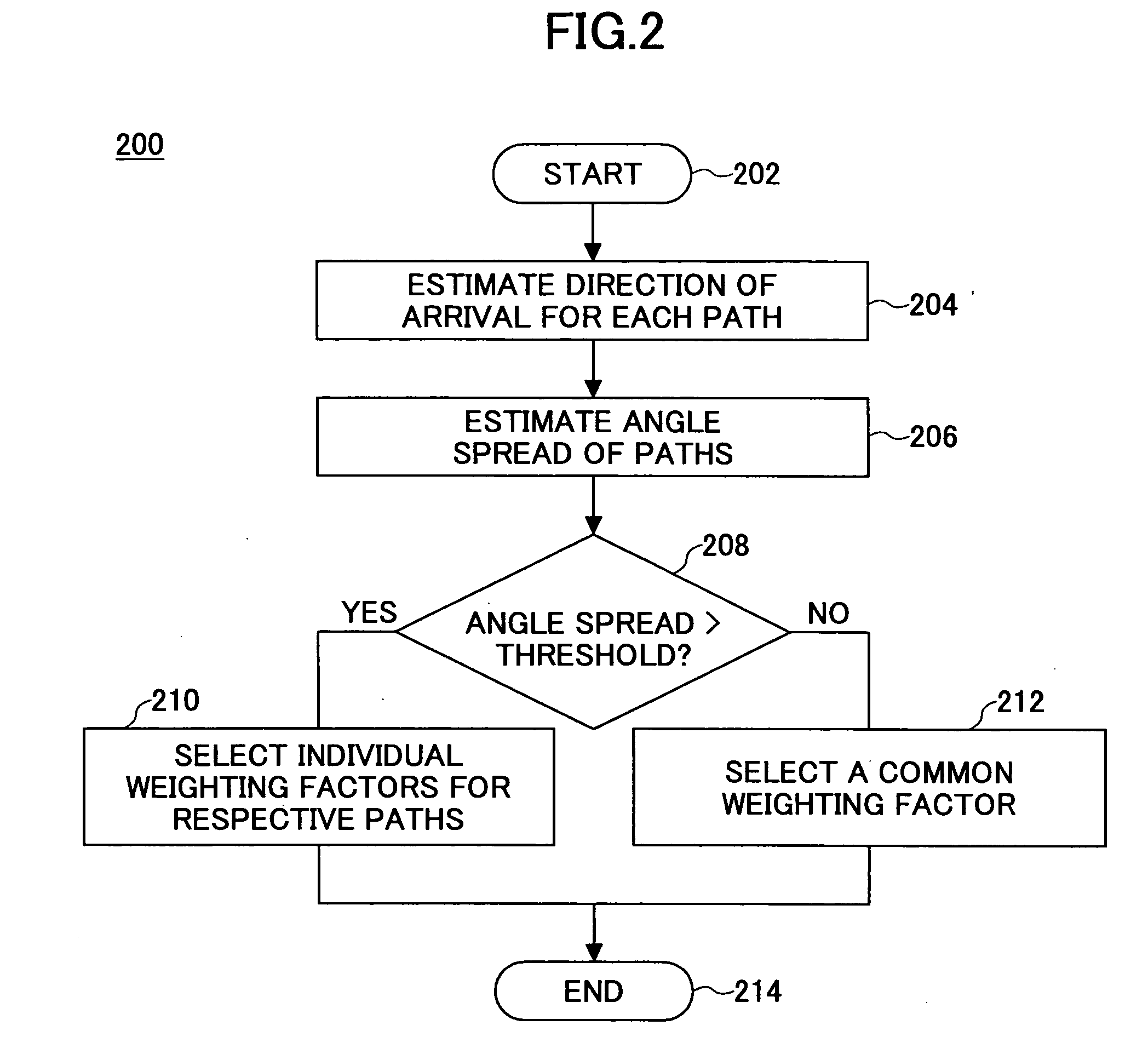Wireless communications apparatus and method using array antenna
a technology of array antennas and wireless communication, applied in diversity/multi-antenna systems, polarisation/directional diversity, differential interacting antenna combinations, etc., can solve the problems of incoming interference waves, inadequacies of uplink and downlink, and inability to produce transmission beam patterns based on the beam pattern of received signals
- Summary
- Abstract
- Description
- Claims
- Application Information
AI Technical Summary
Benefits of technology
Problems solved by technology
Method used
Image
Examples
first embodiment
FIG. 1 is a functional block diagram of the main part of a wireless receiver 100 according to the invention. The wireless receiver 100 has an array antenna 102 with multiple antenna elements 104. In the drawing, only three antenna elements 104 are depicted for the sake of simplification; however, any suitable number of antenna elements can be employed. The antenna elements 104 are, for example, dipole antennas arranged in a line, an arc, or any suitable shape with an interval of half wavelengths, for example, between them. The size, the interval, and the shape of each of the antenna elements 104 are determined so as to realize an appropriate directivity (or beam pattern), and therefore, these factors are not limited to this example. Front end units 106 are connected to the respective antenna elements 104 to perform frequency conversion, bandwidth limitation, power amplification, and other front-end operations. The outputs of the front end units 106 are connected to the inputs of the...
second embodiment
FIG. 8 is a functional block diagram of a wireless communication apparatus according to the invention. The wireless communication apparatus has an array antenna 802 with multiple antenna elements 804. In the drawing, only three antenna elements 804 are depicted for the sake of simplification; however, any suitable number of antenna elements can be employed. The size, the interval, and the shape of each of the antenna elements 804 of the array antenna 802 are determined so as to realize an appropriate directivity (or beam pattern). Receiving front end units 806 are connected to the respective antenna elements 804 to perform frequency conversion, bandwidth limitation, power amplification, and other front-end operations for the received signal. The outputs of the receiving front end units 806 are connected to the inputs to the associated analog-to-digital converters 808. The digital outputs of the analog-to-digital converters 808 are supplied to each of baseband receiving units 810, 81...
PUM
 Login to View More
Login to View More Abstract
Description
Claims
Application Information
 Login to View More
Login to View More - R&D
- Intellectual Property
- Life Sciences
- Materials
- Tech Scout
- Unparalleled Data Quality
- Higher Quality Content
- 60% Fewer Hallucinations
Browse by: Latest US Patents, China's latest patents, Technical Efficacy Thesaurus, Application Domain, Technology Topic, Popular Technical Reports.
© 2025 PatSnap. All rights reserved.Legal|Privacy policy|Modern Slavery Act Transparency Statement|Sitemap|About US| Contact US: help@patsnap.com



